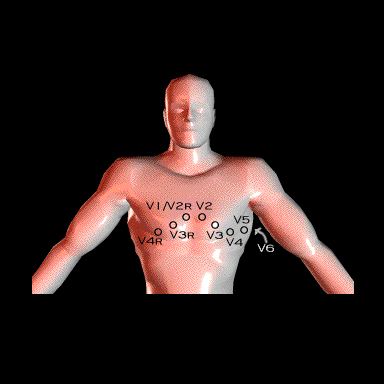
The position of the exploring electrode is not limited to these six positions. It can be placed anywhere on the body as long as the examiner knows its location. In children, two leads from the right side of the chest, identified as leads V4R and V3R are frequently recorded. In lead V4R, the exploring electrode is placed at the 5th right intercostal space in the midclavicular line and in lead V3R, the electrode is midway between V1 (which might also be referred to as V2R) and V4R.
In adults, leads V3R and V4R are often recorded when a myocardial infarction involving the right ventricle is suspected.
